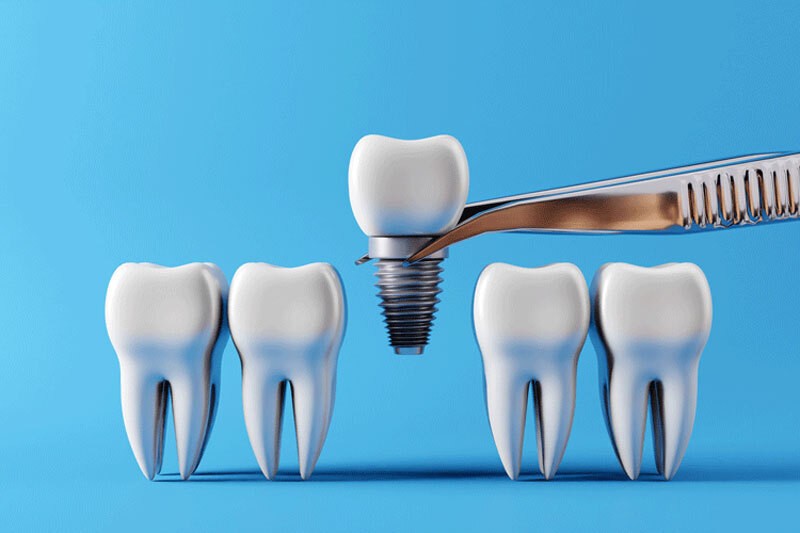Dental implant procedures are among the most advanced and effective solutions for replacing missing teeth. Whether you have lost a tooth due to injury, decay, or disease, dental implants offer a permanent, natural-looking, and functional option that restores both your smile and your confidence. This guide will walk you through the entire dental implant process, from initial consultation to the final restoration, helping you understand what to expect every step of the way.
1. What Are Dental Implants?
Dental implants in Islamabad are titanium posts surgically placed into the jawbone to serve as artificial tooth roots. Once they are securely integrated with the bone (a process known as osseointegration), they act as a stable foundation for attaching custom-made crowns, bridges, or dentures. The implant restores the tooth’s functionality and aesthetic appearance, making it look and feel like a natural tooth.
2. Consultation and Evaluation:
The journey to dental implants begins with a comprehensive consultation with a skilled dentist or oral surgeon. During this visit, your dentist will conduct a thorough evaluation of your oral health, including a visual examination, X-rays, and possibly 3D scans of your jawbone. This step ensures that you have enough healthy bone to support the implant and that your gums are in good condition. If necessary, your dentist may recommend additional procedures, such as bone grafting, to ensure the implant can be successfully placed.
3. The Surgical Procedure:
The next step in the process is the actual dental implant surgery. The procedure is typically performed under local anesthesia to ensure that you are comfortable and pain-free. Depending on the complexity of the case, your dentist may also use sedation techniques to help you relax during the surgery.
During the procedure, the surgeon makes a small incision in your gum tissue to access the jawbone. The titanium implant is then carefully inserted into the bone. Over the next few months, the implant undergoes osseointegration, where the bone grows around the implant, creating a strong and stable base for the future restoration.
4. Healing and Recovery:
After the surgery, there is typically a healing period of several months. During this time, the implant fuses with the jawbone, which is crucial for ensuring the stability and durability of the implant. It’s important to follow post-operative care instructions, which may include pain management, keeping the area clean, and avoiding hard or chewy foods during the initial healing phase.
Your dentist will schedule follow-up appointments to monitor the progress of the healing process. If there are no complications, the implant will integrate with the bone, and you’ll be ready for the next step.
5. Placing the Abutment:
Once the implant has fully integrated with the bone, the next step is to place the abutment. The abutment is a small connector that sits on top of the implant and supports the custom crown or bridge. This procedure is usually done in the dental office and may require a small incision to expose the implant. Once the abutment is in place, your gums will heal around it.
6. Creating and Placing the Custom Restoration:
After the abutment is securely in place and the gum tissue has healed, your dentist will take impressions of your teeth to create a custom crown, bridge, or denture that fits perfectly. The restoration is crafted to match the color, size, and shape of your natural teeth, ensuring that it blends seamlessly with your smile.
Once the restoration is ready, it will be carefully attached to the abutment, completing the dental implant procedure. The final result will provide you with a fully functional and aesthetically pleasing tooth replacement.
7. Caring for Your Dental Implants:
One of the main advantages of dental implants is their long-lasting durability. With proper care, they can last for many years—often a lifetime. Regular brushing, flossing, and professional dental check-ups are essential to keep your implants in good condition. Additionally, it’s important to avoid habits like smoking or grinding your teeth, as these can affect the longevity of your implants.
8. The Benefits of Dental Implants:
Dental implants offer numerous benefits over traditional tooth replacement methods. Some of the advantages include:
- Natural Appearance: Implants look and feel like real teeth, enhancing your smile and confidence.
- Improved Functionality: Implants allow you to chew, speak, and eat normally, unlike dentures, which can slip or cause discomfort.
- Jawbone Preservation: Implants stimulate the jawbone, preventing bone loss and maintaining facial structure.
- Durability: Implants are designed to last a lifetime with proper care, making them a cost-effective solution in the long term.
9. Is the Dental Implant Procedure Right for You?
While dental implants are an excellent option for many patients, they may not be suitable for everyone. Factors such as the amount of available bone, overall health, and gum condition play a role in determining whether dental implants are the right choice. Your dentist will help you explore all possible options based on your individual needs.
Conclusion:
Dental implants are a life-changing solution for individuals with missing teeth. Through a well-planned and carefully executed procedure, you can achieve a natural-looking, functional, and long-lasting smile. By understanding the steps involved in dental implant surgery, you’ll feel more confident and prepared as you embark on your journey to a healthier, more attractive smile.
For more information visit Royal cosmetic surgery.





Comments